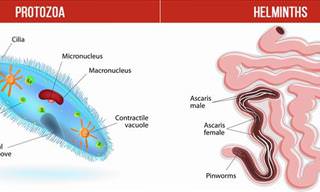A pilot study conducted by a team of researchers at the University of Texas at Austin has led to the discovery that crystalline particles of titanium dioxide, the most common white pigment in everyday products ranging from paint to candles, is linked to incidences of Type 2 diabetes.
Titanium dioxide is not found in normal human tissue, in spite of the fact that the body contains plenty of salts and compounds of metallic elements such as sodium, potassium, calcium, iron, and magnesium, as well as lesser amounts of others.
The research team examined 11 pancreases, with eight of them being from donors who had Type 2 diabetes, and three of them being from donors that did not. They found that the non-diabetic tissue specimens did not have titanium dioxide particles, whereas the particles were detected in all eight tissue specimens taken from the pancreases of those with Type 2 diabetes.

In fact, the researchers found more than 200 million titanium dioxide crystallites per gram of titanium dioxide particles in the pancreases of the Type 2 diabetes donors.
The study was led by Adam Heller, a professor in the McKetta Department of Chemical Engineering in the Cockrell School of Engineering, a 2007 recipient of the National Medal of Technology and Innovation and a lifelong champion of diabetes research.
He said: "Our initial findings raise the possibility that Type 2 diabetes could be a chronic crystal-associated inflammatory disease of the pancreas, similar to chronic crystal-caused inflammatory diseases of the lung such as silicosis and asbestosis."
Titanium dioxide pigment first came into the consumer market during the mid-20th century. It replaced highly toxic lead-based pigments that were used previously. In fact, titanium dioxide became the most commonly used white pigment in paints and in foods, medications, toothpaste, cosmetics, plastics, and paper. This led to the annual production of the stuff to increase by 4 million tons since the 1960s.

World Health Organization statistics indicate that the number of people with diabetes has quadrupled in just four decades, affecting some 425 million people around the world. Type 2 diabetes accounts for the vast majority of these cases. Although obesity and an aging population are considered major facts that led to a rise in cases worldwide, the new study suggests that titanium dioxide could also be to blame.
"The increased use of titanium dioxide over the last five decades could be a factor in the Type 2 diabetes epidemic," Heller said. "The dominant Type 2 diabetes-associated pancreatic particles consist of titanium dioxide crystals, which are used as a colorant in foods, medications and indoor wall paint, and they are transported to the pancreas in the bloodstream. The study raises the possibility that humanity's increasing use of titanium dioxide pigment accounts for part of the global increase in the incidence of Type 2 diabetes."
Heller added that he was keen to conduct a broadened version of the study to further establish the link between titanium dioxide and Type 2 diabetes.
Content source
Images by Deposit Photos.
 Go to BabaMail
Go to BabaMail






















































